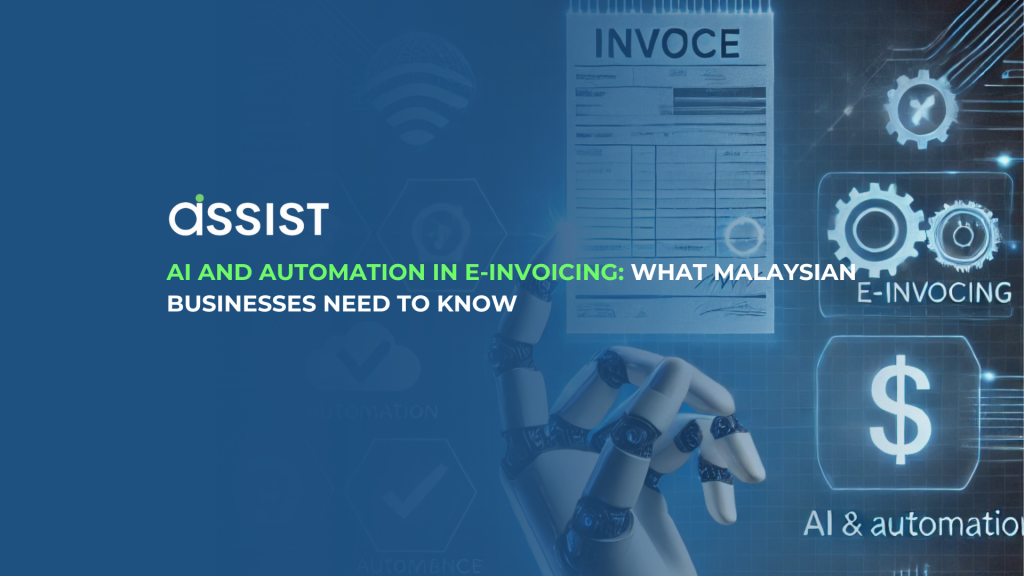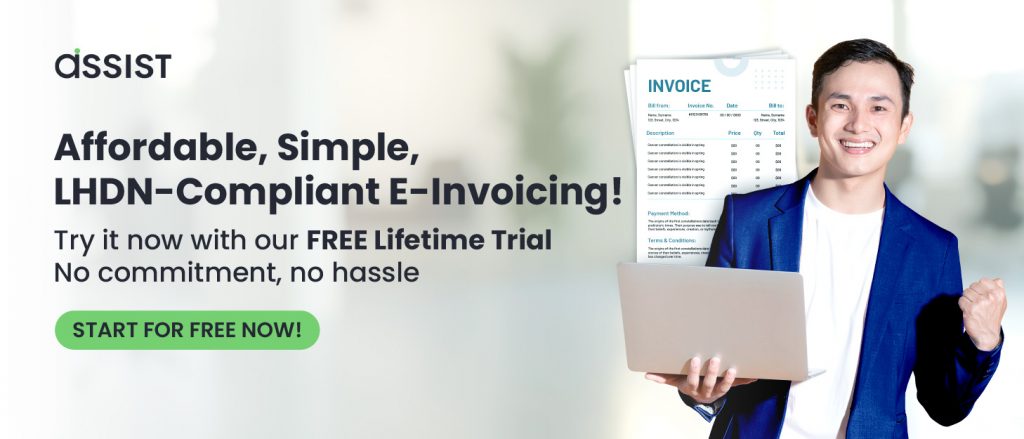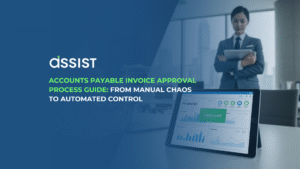The digital revolution is reshaping business operations across the globe, and Malaysia is no exception. With the Malaysian government’s push towards a standardized e-invoicing framework through MyInvois and PEPPOL, businesses must embrace AI and automation to stay competitive. These technologies are not just about keeping up with compliance but also unlocking efficiency, accuracy, and cost savings. In this article, we explore how AI and automation are transforming e-invoicing and why businesses in Malaysia should act now.
Table of Contents
ToggleThe Evolution of E-Invoicing in Malaysia
From Manual Invoices to Digital Solutions
Traditionally, invoicing has been a time-consuming, error-prone process involving paper-based documents or manual data entry. Over the years, businesses have moved toward digital invoices, reducing paperwork and speeding up payment cycles. However, the evolution doesn’t stop there. AI and automation are now taking e-invoicing to the next level.
The Role of MyInvois and PEPPOL
Malaysia’s government introduced MyInvois as part of its e-invoicing initiative to standardize digital transactions and improve tax compliance. The PEPPOL framework enables seamless cross-border e-invoicing, ensuring businesses can send and receive invoices globally with ease.
Compliance Requirements for Malaysian Businesses
To comply with MyInvois, businesses must transition to digital invoicing solutions that support structured formats. AI-driven automation tools help meet compliance requirements by automatically generating, validating, and submitting invoices per regulatory guidelines.
What is AI-Powered E-Invoicing?
AI-powered e-invoicing refers to the use of artificial intelligence and automation to streamline the invoicing process. It involves machine learning algorithms, natural language processing (NLP), and robotic process automation (RPA) to reduce human intervention and enhance accuracy.
How Automation Improves Invoice Accuracy and Efficiency
Automation reduces human errors such as duplicate entries, incorrect tax calculations, and misplaced invoices. AI can also recognize patterns in financial transactions, flagging potential discrepancies before they become issues.
Examples of AI-Driven Invoicing Solutions
Automated Data Extraction: AI reads invoice details from emails or PDFs, reducing manual entry.
Smart Matching: AI matches invoices with purchase orders for faster approvals.
Predictive Analytics: AI anticipates cash flow trends and suggests optimal invoice scheduling.
Key Benefits of AI & Automation in E-Invoicing
| Benefit | Description |
|---|---|
| Enhanced Accuracy | Eliminates manual errors in invoice processing |
| Time-Saving Efficiency | Faster invoice creation and approval workflows |
| Fraud Detection & Compliance | Identifies anomalies and ensures tax compliance |
| Seamless Integration | Works with accounting and ERP systems |
How AI & Automation Solve Common Invoicing Problems
- Delayed Payments: AI-driven reminders and automated follow-ups ensure timely payments.
- High Invoice Volume Management: Automation processes thousands of invoices with minimal human input.
- Duplicate or Incorrect Invoices: AI detects and prevents duplicate or erroneous invoices before submission.
Challenges & Considerations for Malaysian Businesses
Cost of Implementation and ROI Analysis
While AI-powered invoicing solutions require an initial investment, businesses often see a strong return on investment (ROI) through reduced errors, faster payments, and improved productivity.
Data Security Concerns and Regulatory Compliance
Ensuring compliance with Malaysia’s Personal Data Protection Act (PDPA) and MyInvois requirements is crucial. AI-powered platforms must have robust encryption and access controls to protect sensitive financial data.
Overcoming Resistance to AI Adoption
Some SMEs may be hesitant to adopt AI due to a lack of technical knowledge. Educating teams and choosing user-friendly AI invoicing solutions can ease the transition.
How to Get Started with AI-Powered E-Invoicing
Choosing the Right E-Invoicing Platform
Businesses should look for AI-powered invoicing solutions that offer compliance with MyInvois, automation features, and seamless integration with existing systems.
Steps to Integrate AI Automation into Workflows
- Assess Current Invoicing Processes: Identify pain points in manual invoicing.
- Select an AI-Driven Solution: Choose a platform that fits business needs.
- Train Employees: Ensure staff understands how to use the new system.
- Monitor & Optimize: Continuously refine processes for efficiency.
Conclusion
AI and automation are no longer futuristic concepts—they are essential tools for Malaysian businesses navigating the digital transformation. E-invoicing powered by AI enhances accuracy, efficiency, and compliance while reducing the burden of manual processing.
Now is the time to future-proof your business with AI-driven invoicing. Assist.biz offers a seamless, AI-powered e-invoicing solution designed to keep you compliant and efficient. Sign up today and take the hassle out of invoicing!
Frequently Asked Questions (FAQ)
What is AI-powered e-invoicing?
AI-powered e-invoicing uses artificial intelligence and automation to streamline the invoice generation, validation, and processing workflow, reducing errors and improving efficiency.
Is e-invoicing mandatory in Malaysia?
Yes, the Malaysian government is implementing mandatory e-invoicing through the MyInvois system, requiring businesses to transition to digital invoicing for compliance.
How does AI improve e-invoicing efficiency?
AI eliminates manual data entry, detects errors, automates invoice approvals, and sends smart payment reminders to ensure faster transactions and improved cash flow.
What are the benefits of AI and automation in e-invoicing?
Key benefits include enhanced accuracy, faster processing, fraud detection, seamless integration with accounting software, and compliance with tax regulations.
What challenges do Malaysian businesses face when adopting AI invoicing?
Challenges include the cost of implementation, data security concerns, and resistance to AI adoption, especially among SMEs unfamiliar with automation.
How can businesses get started with AI-powered e-invoicing?
Businesses should choose a MyInvois-compliant invoicing platform, integrate AI automation into their workflows, train employees, and continuously optimize their invoicing process.





